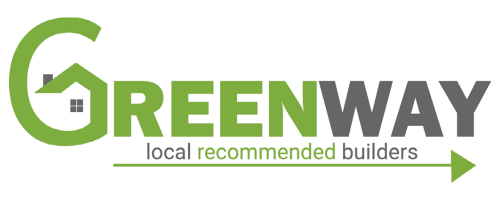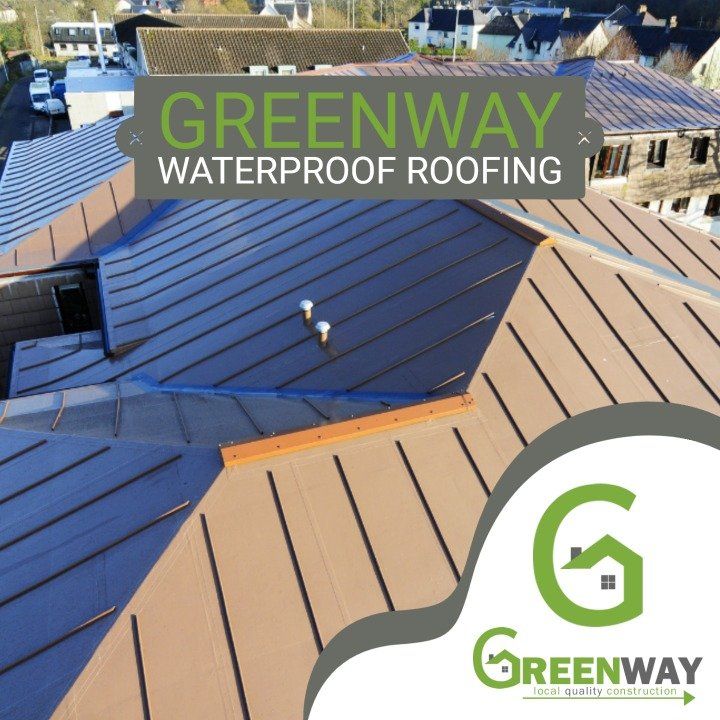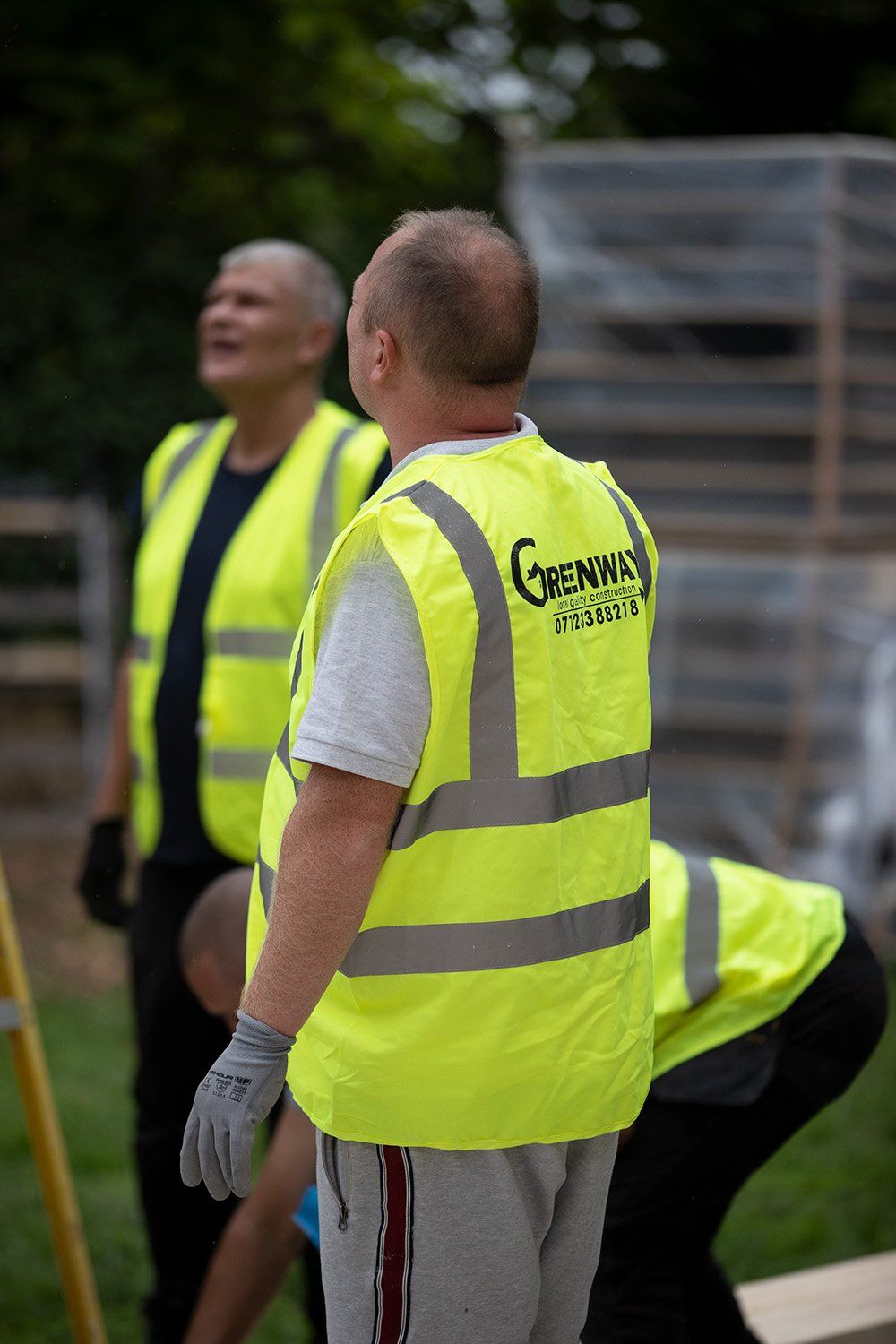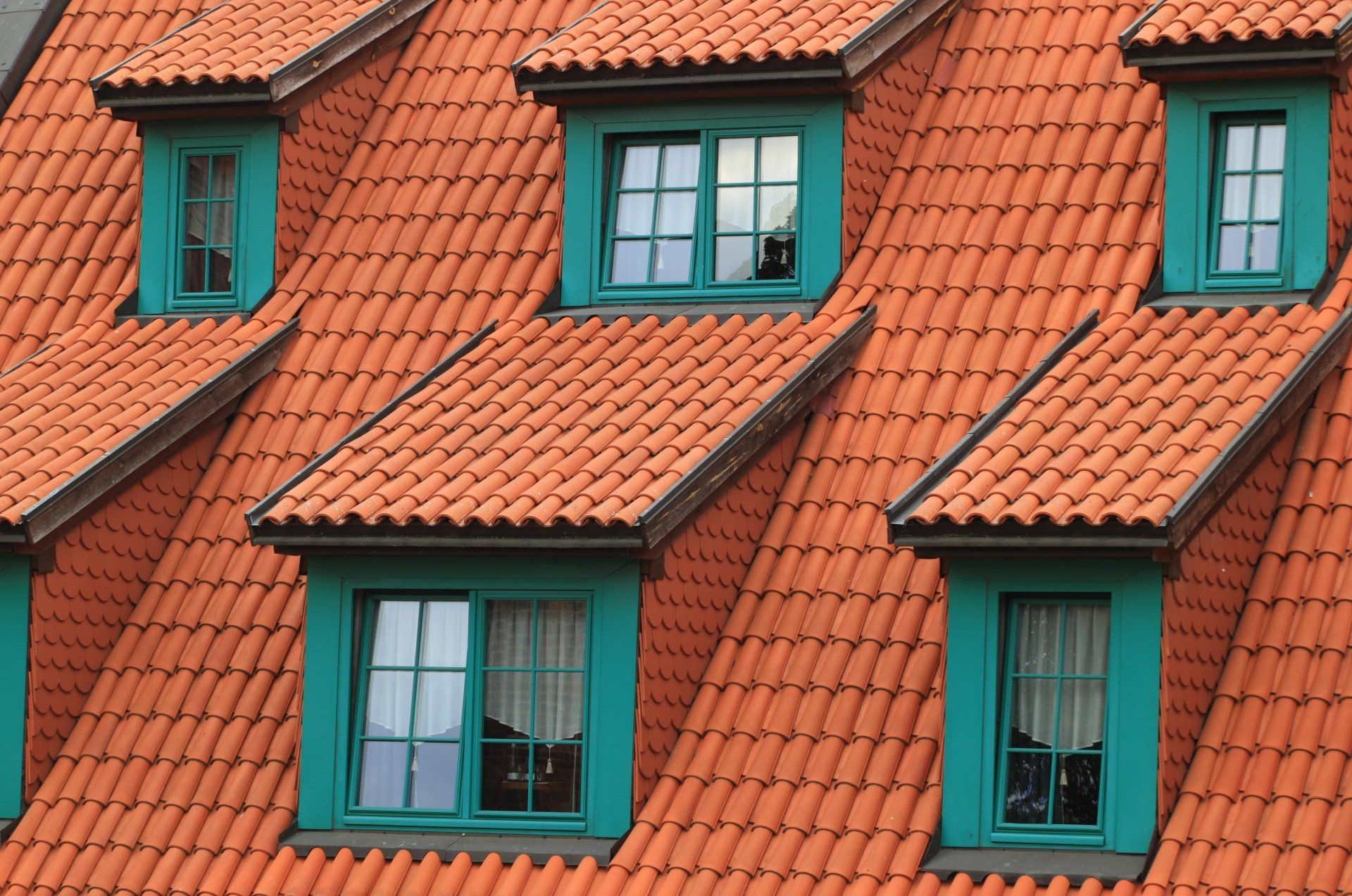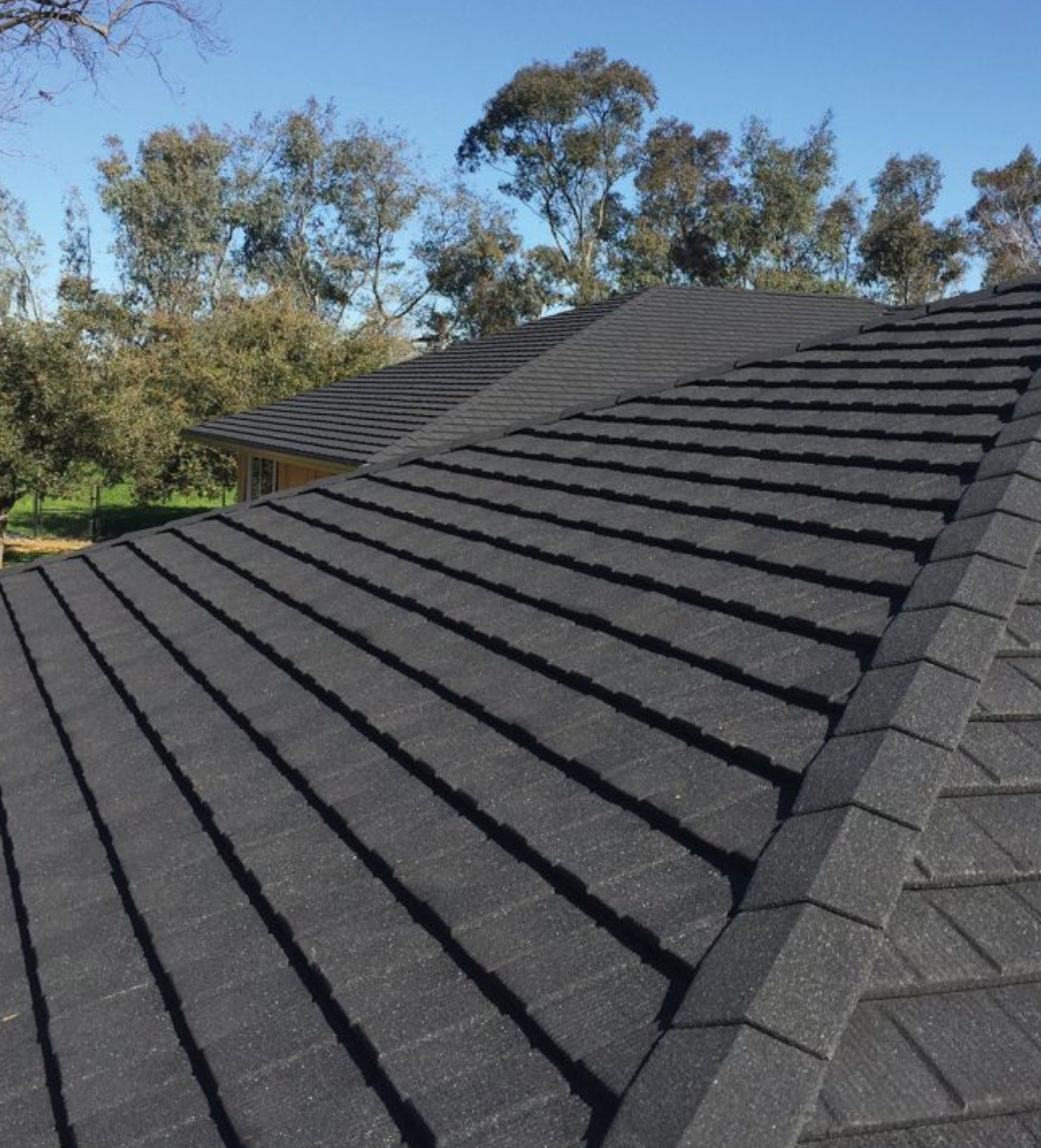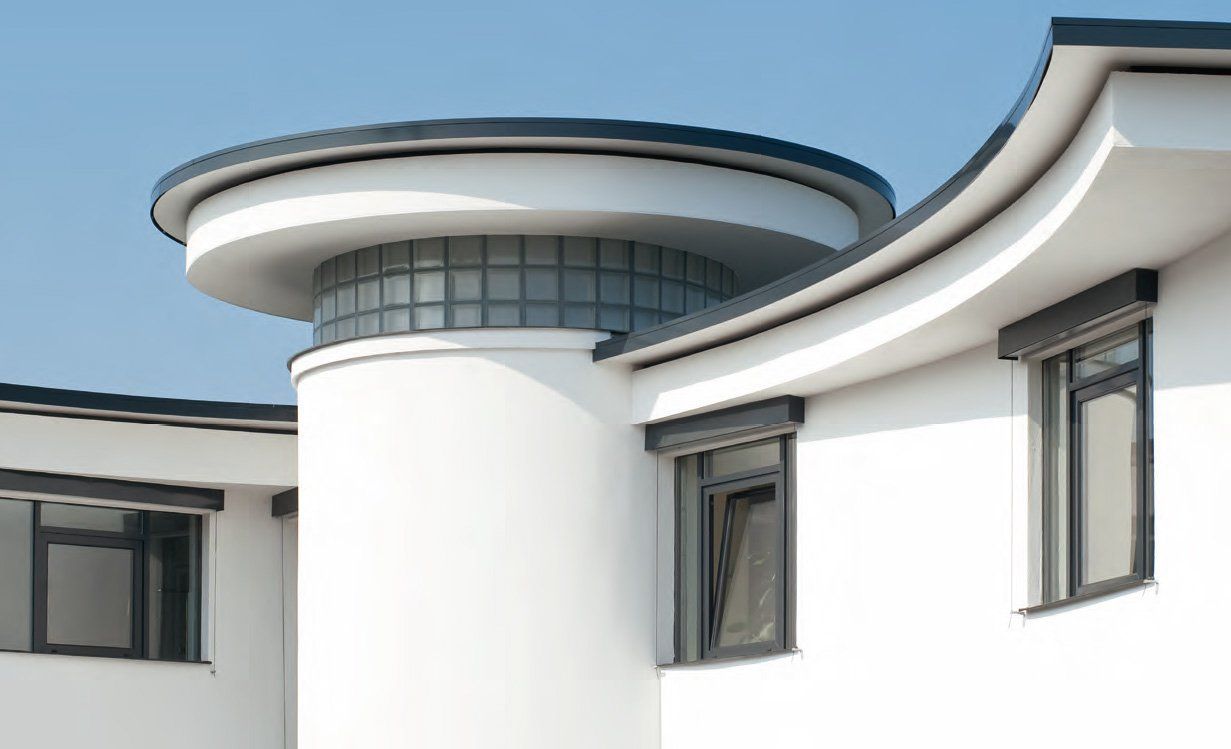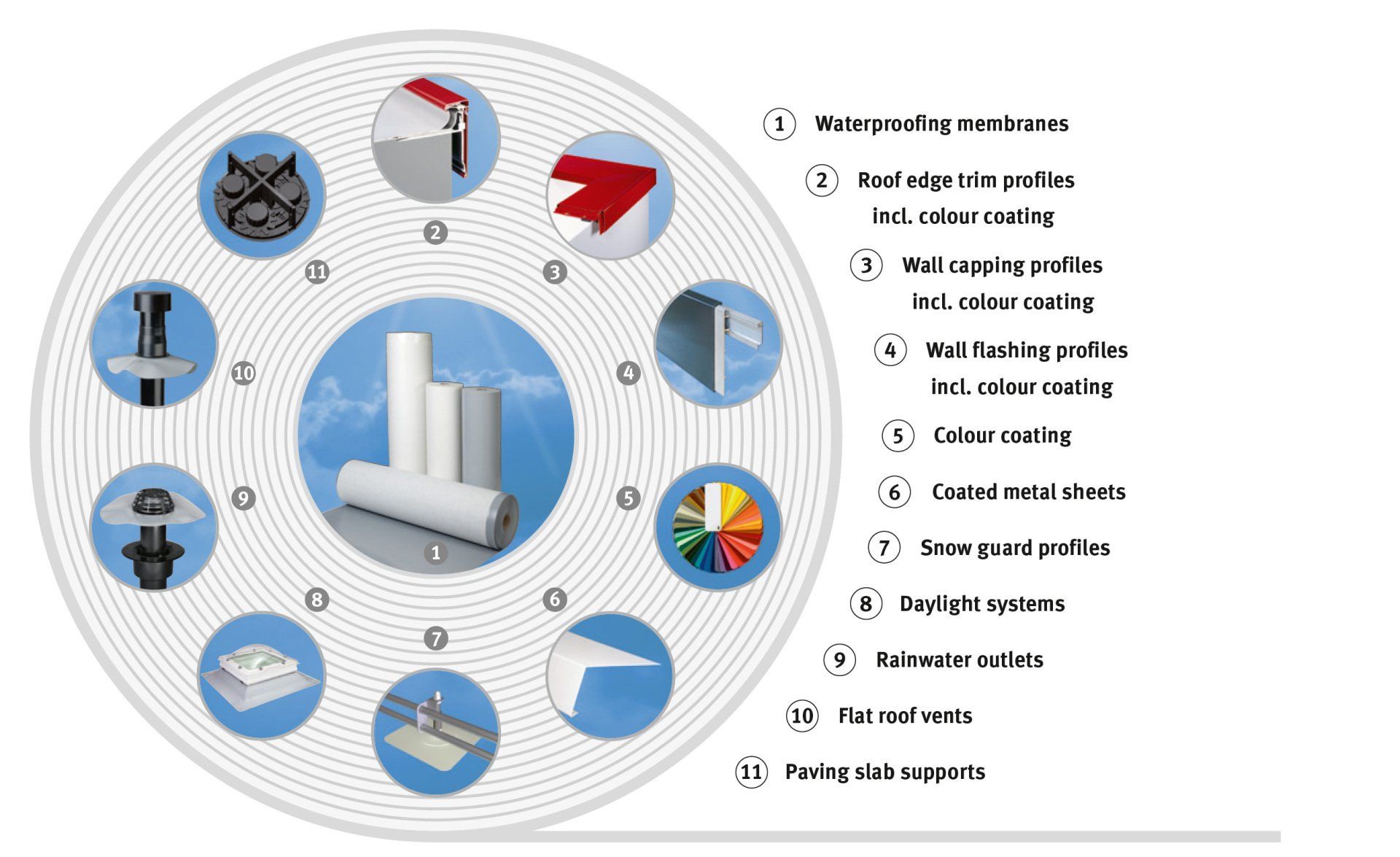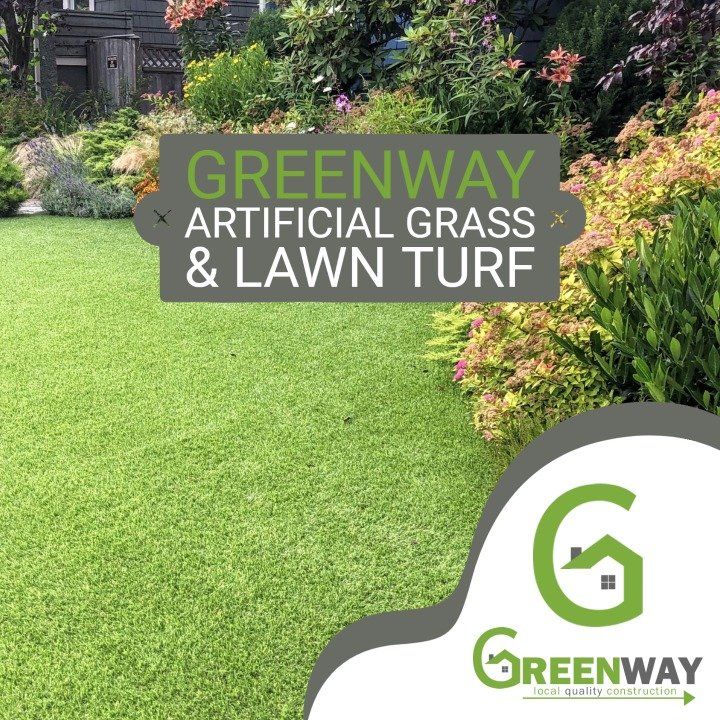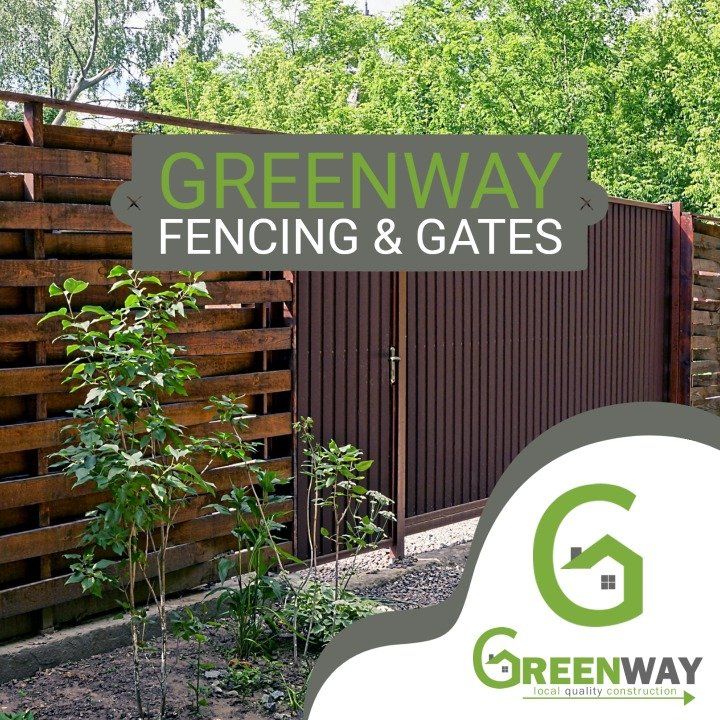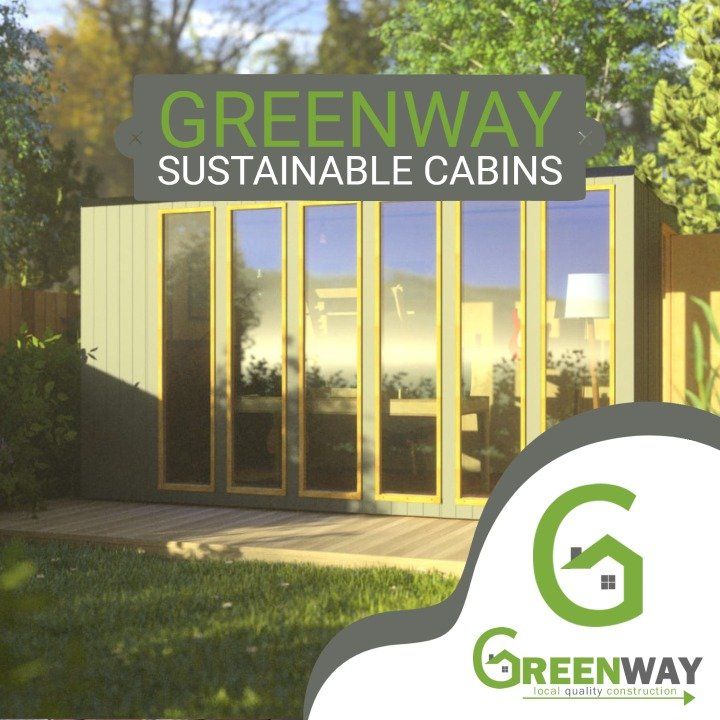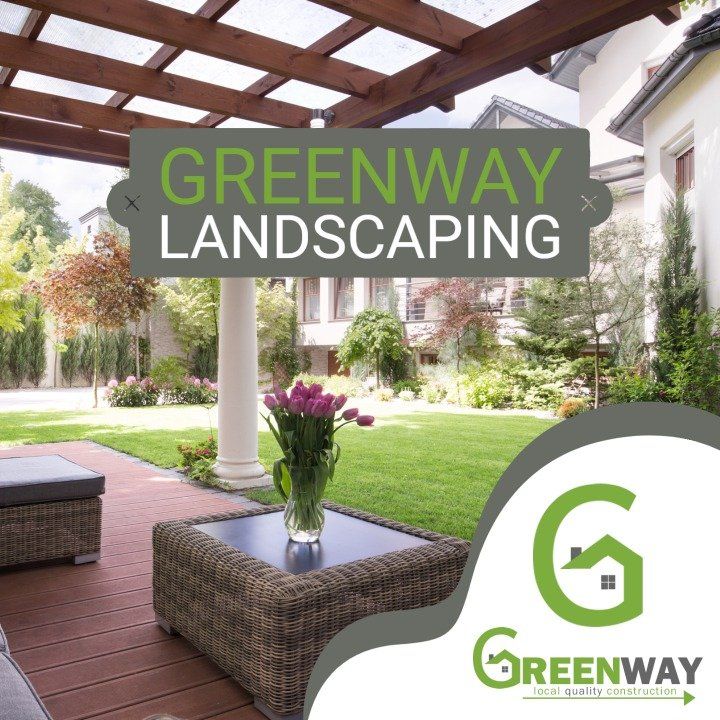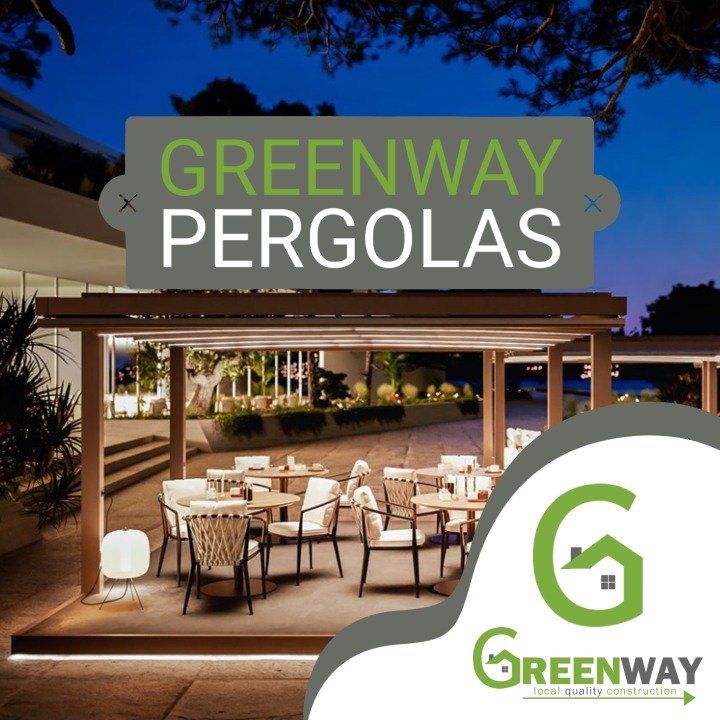WATERPROOF ROOFING SYSTEMS
Greenway's waterproof roofing solutions are from the Alwitra® product range. Sustainable, environmentally friendly flat-roof technology systems for innovative building projects.
Roofing Types
There are many different types of roofs, including domed, butterfly, dormer, gambrel, and parapet, but most of these incorporate the main elements from the following types of roofs:
- Flat - A flat roof has a shallow pitch, almost horizontally level.
- Hip - A hip roof has slopes on all of its sides.
- Gable - A gable roof features two sloping sides that meet at the top to form a ridge.
However, for every uniquely designed building, there's a different material to cover the roof. Usually, the shape determines the best type of material to use.
Popular Roofing Materials
Roofing Shingles
Roof shingles are roof coverings made from individual overlapping elements.
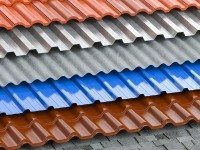
These elements are typically flat, rectangular shapes laid in courses from the bottom edge of the roof up, with each successive layer overlapping the joints below. Roof rafters hold up the shingles, consisting of various materials such as wood, slate, flagstone, metal, plastic, and composite materials such as fibre cement and asphalt shingles.
Ceramic roof tiles, which still dominate Europe and some parts of Asia, are usually called tiles.
Slate Roof Tiles
Slate roofing can last up to 100 years or more. It is waterproof and won't burn. It also resists mould and fungus. Slate is quite effective in wet climates but is comparatively expensive, heavy and easily broken.
Asphalt Roof Shingles
Asphalt shingles are the most common roofing materials because they're effective in all environmental conditions - great for UK weather. Quality varies widely, so be secure knowing Greenway asphalt passes all the wind and impact rating tests.
Metal Roofing Types
Metal roofing comes in vertical panels or shingles resembling slate and tile and can last from 50 to 70 years. Metal excels at keeping off heavy rain and snow, won't burn and resists high winds. Most metal roofing types are lightweight and low maintenance compared to other, more traditional roofing materials.
Zinc Roofing
A zinc roof is a protective top covering that contains the high-quality, brittle metal known as zinc. Zinc is a standing seam roof material used in roofing projects for over two centuries. Zinc has high levels of flexibility and malleability, making roofing projects stand out when finished.
Copper Roofing
Copper is one type of metal renowned worldwide for its durability, with few other metals lasting 60 to 100-year lifespan. Copper needs high levels of maintenance and repair to prolong its lifespan, but the overall aesthetic is worth it to many building owners.
Sustainable Roofing Materials
Eco-Friendly
Roofing Solutions
Greenway is in an advantageous position regarding eco-friendly roofing because our roofing labour team has all the experience needed to make a real difference in how clients purchase. After all, the buyer can ultimately make the necessary changes for a greener revolution!
Reducing the environmental impact of roofing within the construction industry is based on encouraging low-impact materials, using recycled content or secondary material where possible, designing out waste, designing in deconstruction and reducing construction impacts.
By maintaining high standards among contractor members and managing competency schemes, Greenway hopes to improve the quality of installations to help close the performance gap between the predicted energy performance of a building at the design stage and its actual performance after completion.
Green Roofs & Blue Roofs
Green roofs and Blue roofs are vital in helping cities adapt to the effects of climate change by reducing the need for artificial cooling in hot weather, reducing rainwater runoff and providing a range of habitats for wildlife.
Metal Roofing and Cladding
Steel, zinc and other metals are fully recyclable. Recycling steel can actually enhance its quality and strength. Ultra-Low CO2 steelmaking (ULCOS) is a partnership of 48 European organisations, which also include steelmakers that have committed to reducing CO2 emissions of steel production by 50 per cent by 2050.
Building Integrated Photovoltaics (BIPV)
Some criticisms of mounted solar panels are poor aesthetics, improper installation and expensive maintenance costs. Photovoltaics integrated into building facades and cladding using semi-transparent thin-film or crystalline solar panels and solar slates and tiles on rooftops is a much better way of gathering solar energy.
Solar Roof Tiles
Solar roof tiles are becoming increasingly popular as they integrate seamlessly into existing shingles, generating 13-63 watts per tile. They're perfect for sunny roofs and may help offset energy costs with their solar power.
Eco-friendly Living Roofs
Green roofs are covered with plants or grass and can improve the air quality in surrounding areas. Living roofs reduce water runoff and insulate homes to mitigate urban heat islands. However, they need extra structural support, a vapour barrier, thermal insulation, water filtration, waterproofing, drainage, soil, compost and, of course, plants. But they look fantastic!
Popular Roofing Questions
Do you have a question? We’re here to help.
Flat Roof Waterproofing
When considering flat roofing systems, the number of choices can be overwhelming. Several types of materials construct flat roofs with key considerations including material performance, the complexity of the structure and aesthetics.
Greenway has seen an upsurge in flat roofing requests as they are a versatile element of modern architecture. Waterproof roofing membranes from Alwitra® meet the needs of both residential and commercial clients with a focus on durability and flexibility, leading the way in materials innovation.
The Alwitra® waterproofing membranes are just part of a complete waterproofing system the Greenway team are trained to install.
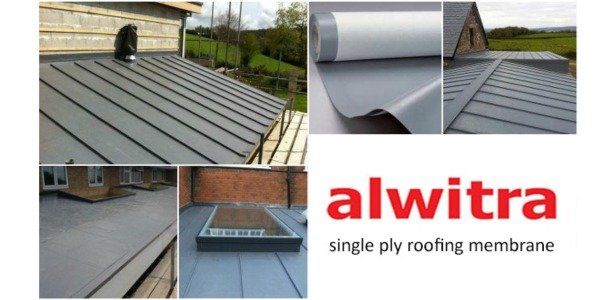
Evalon Single-ply Membranes
Alwitra Evalon single-ply membranes consist of a high polymer alloy of EVA (ethylene vinyl acetate terpolymer) and PVC (polyvinyl chloride), a purpose-made thermoplastic material, assuring an optimum life expectancy suitable for all types of flat roof construction and application methods. This membrane offers a quick and simple, economical installation. Benefits include a dirt-resistant smooth surface that allows moisture to escape from the roof across the entire membrane surface. It is also resistant to radiation damage and has a fire load five times lower than a built-up felt roof.
Evalastic Single-Ply Membranes
Alwitra Evalastic single-ply membranes consist of 100% recyclable EPDM (ethylene propylene diene monomer). This rubber roofing membrane is an environmentally-friendly alternative free from bitumen, PVC, plasticisers and chlorine, offering superior waterproofing, outstanding chemical resistance, extreme temperature tolerance (-40℃ to 100℃), and long-term performance in severe weather conditions. Another environmental feature of Awitra Evalastic is that rainwater is not polluted by the membrane and can be collected later.
Trusted Roof Waterproofing Solutions
Why Greenway Prefers Alwitra®
- Alwitra® manufactures EVALON® waterproofing membranes covering over 180 million square metres of flat roofs worldwide with almost 40 years of experience with waterproofing systems in the UK.
- All the alwitra® membranes are thoroughly tested and certified along with tried and tested compatible system components giving a seamless finish on every project.
- Alwitra® is the leader in its field used in iconic, landmark architecture worldwide.
- Alwitra® was the first in the industry to introduce Environmental Product Declarations as per ISO 14025 and EN 15804+A1. [Download pdf]
- Trusted by architects, roofing contractors & developers, alwitra® waterproofing membranes have a 25-year guarantee.
- Alwitra® has one of the industry’s largest teams of expert consultants and provides Greenway with specialist training to develop practical and technical expertise throughout the roofing team.
